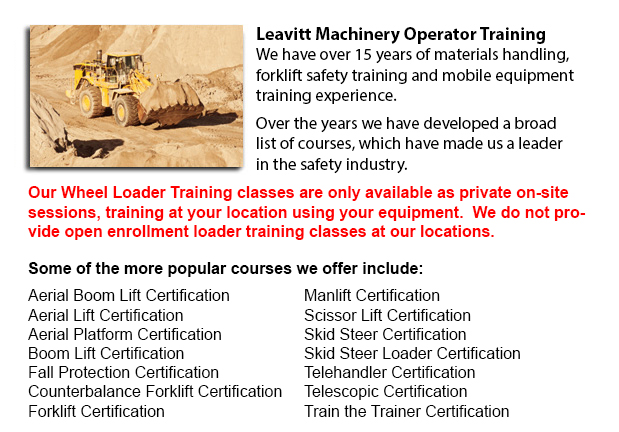
Lift trucks are available in several different models that have varying load capacities. Nearly all typical forklifts used inside warehouse settings have load capacities of one to five tons. Larger scale models are used for heavier loads, like for example loading shipping containers, can have up to 50 tons lift capacity.
The operator could utilize a control in order to lower and raise the tines, that are likewise referred to as "forks or tines." The operator can likewise tilt the mast to be able to compensate for a heavy load's tendency to angle the forks downward to the ground. Tilt provides an ability to operate on rough ground also. There are yearly competitions meant for skilled lift truck operators to compete in timed challenges as well as obstacle courses at regional lift truck rodeo events.
General use
Forklifts are safety rated for cargo at a particular maximum weight as well as a specific forward center of gravity. This essential info is supplied by the manufacturer and situated on a nameplate. It is vital loads do not go beyond these details. It is prohibited in numerous jurisdictions to interfere with or remove the nameplate without obtaining permission from the forklift manufacturer.
The majority of forklifts have rear-wheel steering in order to improve maneuverability. This is very helpful within confined spaces and tight cornering spaces. This type of steering varies fairly a little from a driver's initial experience along with different vehicles. Since there is no caster action while steering, it is no needed to use steering force in order to maintain a continuous rate of turn.
One more unique characteristic common with forklift utilization is instability. A constant change in center of gravity occurs between the load and the lift truck and they must be considered a unit during use. A forklift with a raised load has gravitational and centrifugal forces which can converge to cause a disastrous tipping mishap. So as to prevent this from happening, a forklift must never negotiate a turn at speed with its load raised.
Lift trucks are carefully built with a cargo limit used for the forks. This limit is lowered with undercutting of the load, which means the load does not butt against the fork "L," and likewise decreases with fork elevation. Normally, a loading plate to consult for loading reference is positioned on the lift truck. It is unsafe to make use of a forklift as a worker hoist without first fitting it with specific safety equipment like for instance a "cage" or "cherry picker."
Lift truck use in warehouse and distribution centers
Lift trucks are an important component of warehouses and distribution centers. It is essential that the work environment they are placed in is designed so as to accommodate their safe and efficient movement. With Drive-In/Drive-Thru Racking, a forklift needs to travel in a storage bay which is many pallet positions deep to set down or take a pallet. Operators are usually guided into the bay through rails on the floor and the pallet is placed on cantilevered arms or rails. These tight manoeuvres require trained operators to be able to complete the job safely and efficiently. Since each pallet requires the truck to go in the storage structure, damage done here is more common than with different kinds of storage. Whenever designing a drive-in system, considering the dimensions of the blade truck, as well as overall width and mast width, need to be well thought out to make sure all aspects of a safe and effective storage facility.
-
Forklift Training Programs Edmonton
Forklift Training Programs Edmonton - If you are searching for work as an operator of a forklift, our regulatory-compliant lift truck training programs provide excellent instruction in numerous styles and types of forklifts, classes on pre-shift insp... More -
Heavy Equipment Training School Edmonton
Heavy Equipment Training School Edmonton - The heavy equipment operator courses will assist the operator in acquiring the required skills and knowledge they will require to be able to enter the workforce as an entry level operator. In this 12 week co... More -
Manlift Ticket Edmonton
Manlift Ticket Edmonton - The Elevated Platforms and Manlifts Certification program helps to provide the necessary training on the safe operating procedures, work practice, rules and regulations regarding the daily activities for the operators of thi... More -
Crane License Edmonton
Crane License Edmonton - Crane operators must be "credentialed", which means they must have a crane operator license or certification. Credentialing is considered a mandatory governmental requirement in order to practice as a crane operator. Having a... More -
Counterbalance Forklift License Edmonton
Counterbalance Forklift License Edmonton - When operated by totally trained operators, forklifts could become a major advantage for firms and companies. We could offer your staff a comprehensive training program which covers all aspects of operating... More -
Manlift Safety Training Edmonton
Manlift Safety Training Edmonton - Manlift operators have to be aware and cognizant of all the potential hazards which are associated with particular types of scissor lifts. They need to be able to operate the scissor lift in a way that protects not... More -
Forklift Training School Edmonton
Forklift Training School Edmonton - Forklift Training School And Reasons Why It Is Really Important - Industry and federal regulators have established the criteria for forklift safety training based on their existing standards and regulations. Indivi... More -
Overhead Crane Safety Training Edmonton
Overhead Crane Safety Training Edmonton - The overhead crane safety training course is designed to equip the operators with the right skills and knowledge in the areas of: crane safety precautions, materials handling, accident avoidance, and equipmen... More

Forklift Training Edmonton
crossorigin="anonymous">
TOLL FREE: 1-888-254-6157
Edmonton, Alberta
forklifttrainingedmonton.com
Email Us
About Us


